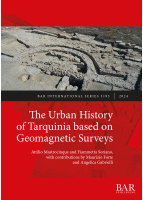Description
This book presents results from a series of large-scale geomagnetic surveys undertaken across the entire area of ancient Tarquinia – an area of 104 hectares. These results allow a better understanding of the road network, city gates, insulae, the orientation of neighborhoods, as well as other features. Monuments and structures identified include the Roman forum, the basilica, the macellum, the likely horrea, and a semicircular plaza. A sparsely built-up area in the eastern part of the city allows for historical considerations on the 6th century urban plan, when the circuit of walls was conceived with the idea of accommodating more people than those who actually settled in Tarquinia. Geophysical surveys indicate that the urban layout was not radically changed until the end of antiquity, while the phenomenon of Romanization can be recognized in the creation of structures such as the forum or the macellum, in the restructuring of buildings, like the “domus of the Mithraeum,” or in the paving of pre-existing roads. Overall, this book provides important new insights into the ancient city of Tarquinia, as well as a case study for the use of geomagnetic survey as an archaeological tool.
AUTHOR
Attilio Mastrocinque is a specialist in ancient history and the history of ancient religions. He has been a researcher at the University of Venice and a professor at the Universities of Trento and Verona.
Fiammetta Soriano is a specialist in archaeological stratigraphy, Roman building techniques, and ancient topography. She has a PhD in archaeology from the University of Verona.
REVIEW
‘The data and the interpretation are both of great value for the understanding of the ancient city of Tarquinia. This survey is a milestone to the understanding of the city that future scholars cannot ignore.’ Professor Stefano Campana, University of Siena











